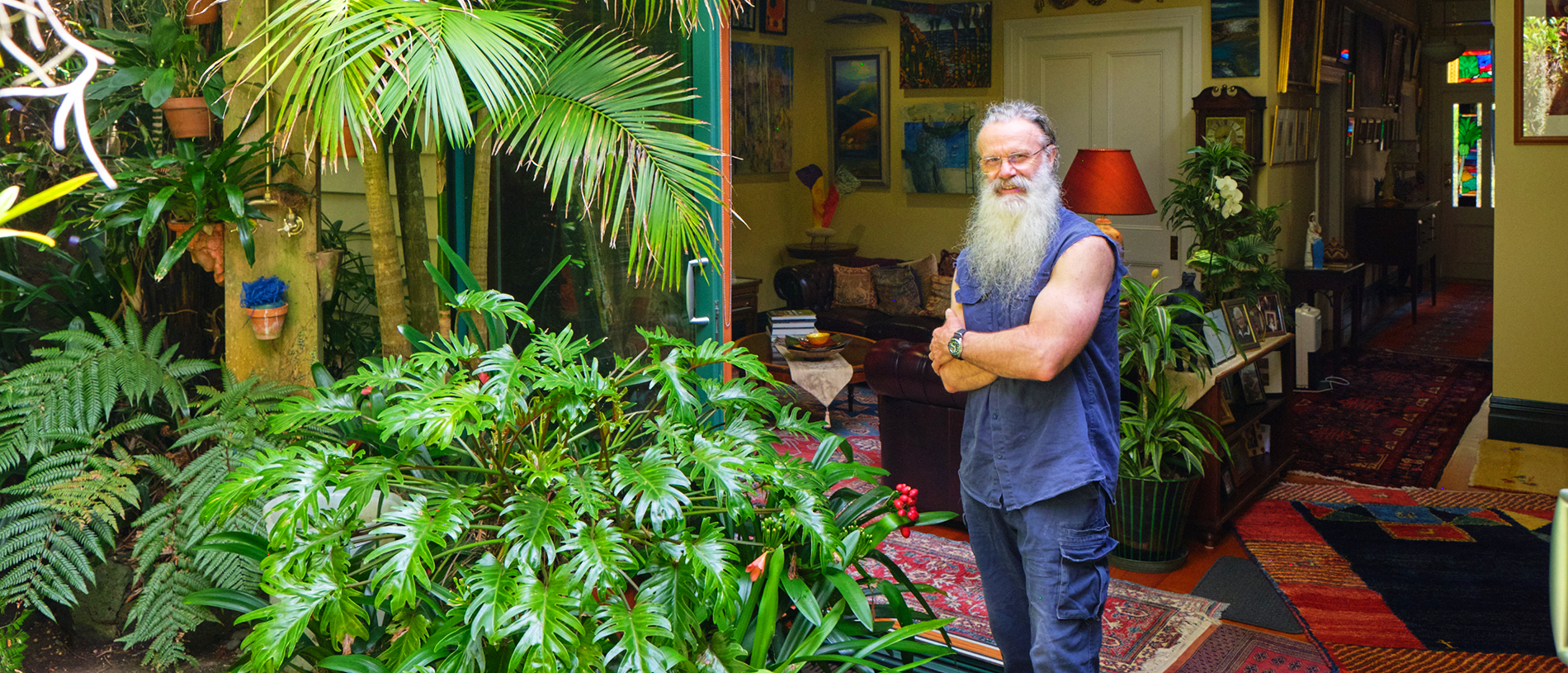
Top tips for baby-proofing your home
We share advice on how to make your home safe for babies and young children.

The pocket-sized patch of Freemans Bay that Mark Van Kaathoven shares with husband Gene Dillman is a spectacular example of vertical planting. Towering palms soar skywards dripping with epiphytes (air plants), completely enshrouding the couple’s 1890s home and forming a lush canopy for an eclectic oasis of green.
Aptly known as the Urban Jungle, this verdant 427 square metre plot is just moments from Auckland’s CBD – yet step through the front gate (if you can find it) and you’re transported to another world. Exploding with flora and teeming with wildlife, the dull hum of traffic is drowned out by birdsong. The only hint of the city is a peep of the Sky Tower through gently swaying fronds. Rated five-stars by the New Zealand Gardens Trust, and considered a garden of national significance, this tiny tranquil slice of heaven is a paragon for what can be achieved with vision, passion and plenty of elbow grease.

“In small gardens you don’t look at landmass, you go up in airspace with layers. Once you work that out, your garden becomes almost limitless,” says Mark.
Since purchasing the property close to 30 years ago, Mark and his garden have quite literally grown up together.
“When I first moved in, I created an English-style garden, but it needed so much spraying I decided to change my whole way of gardening, mixing in subtropicals, natives and a bit of European. It just took off.”
Working with Mother Nature instead of fighting against her was the key to success. “There are too many control freaks in this world; if you relax with nature and give her a chance you’ll be surprised by what you can create.”
Divided into different garden ‘rooms,’ connected by cobbled paths viewed as ‘hallways,’ Mark and Gene’s garden is a seamless extension of their colourful, art-filled home.
“A garden needs to engage with what your house is doing and vice versa – they have to work together in harmony.”
Nothing showcases this harmony more beautifully than their show-stopping dining room extension, nestled among the trees. They just slide back all the doors and they are practically sitting in a rainforest.
“This garden is my Zen. There are different spaces for reflection, tranquility and solitude. We’ve got no need to ever leave; in fact Gene and I are dying in this place and we’ll have our ashes thrown on the compost!”

Compost, as it turns out, is Mark’s secret weapon.
“During this year’s floods so many of the properties around us flooded, but ours didn’t. Compost acts as a sponge, holding onto the water in summer as well as in the wet periods. Composting is a simple thing we could all be doing to help mitigate climate change. I haven’t taken any green waste to the tip for years, it all just goes straight onto the garden.”
Once he has finished spreading compost around his own private sanctuary, Mark heads out to the berm and beyond, sprinkling his unique blend of garden magic throughout the local community.
“I live by the Māori philosophy that we are only caretakers, so when I ran out of room in my garden I decided to start planting on the berms.”

That was around 1996. Since then, Mark has worked his way across and down the road to Freemans Park Gardens which he has been transforming with restorative gardening processes since 2019. All his work at the park is voluntary; he has relocated hundreds of plants that were destined for landfill, converted old storm water pipes into spectacular planters, and reinstated pavers from a recently discovered bluestone road (dating back to 1860!) to give the park provenance.
“Every week my contractors make a carbon contribution (green waste delivery), I do the mowing, and every morning I’m down there at 8am picking up rubbish. This is my legacy - it’s a way I can give back to the community, it’s something for everybody to enjoy.”
There are other benefits too. “When you’re out planting berms and parks you meet so many amazing people in your community – people you’d never meet if you just stayed within the four walls of your property.” And the icing on the cake? “I have 2.5 acres of garden but I only pay rates on a fraction of that!”
To find out more about the Urban Jungle and other outstanding New Zealand gardens visit www.gardens.org.nz
Story by Vanessa Trethewey for the Summer 2023 issue of AA Directions Magazine. Vanessa Trethewey is a freelance writer from Auckland who regularly contributes to AA Directions Magazine.